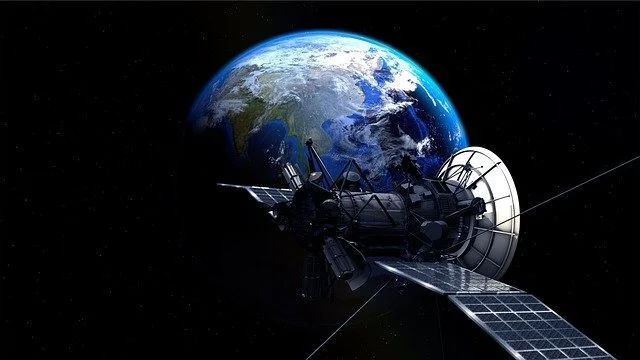FCC Announces Temporary Freeze on 3.7 - 4.2 GHz Band Applications – Opens 90-Day Window To Register Existing Earth Stations
The Federal Communications Commission’s (FCC) International, Public Safety and Homeland Security, and Wireless Telecommunications Bureaus have announced a temporary suspension, effective April 19, 2018, on the filing of certain applications in the 3.7 - 4.2 GHz band.[1] The freeze will allow the FCC to “preserve the current landscape of authorized operations in the 3.7 - 4.2 GHz band” as it moves forward with an inquiry into the possibility of permitting mobile broadband use and more intensive fixed use of the band.
That proceeding was launched in August 2017 with the release of a Notice of Inquiry (NOI) to examine “potential opportunities for additional flexible access – particularly for wireless broadband services – in spectrum bands between 3.7 and 24 GHz.”[2] Comment was requested on three specific sets of mid-band frequencies: 3.7 - 4.2 GHz; 5.925 - 6.425 GHz; and 6.425 - 7.125 GHz. However, the NOI is now focused on reworking the 3.7 to 4.2 band for licensed use.
Freeze On New Or Modification Applications In The 3.7 - 4.2 GHz Band
Beginning April 19, 2018, there is a freeze on the filing of new or modification applications for fixed-satellite service (FSS) earth station licenses, receive-only earth station registrations, and fixed microwave licenses in the 3.7 - 4.2 GHz band. However, the freeze is subject to the following exceptions: (1) the freeze does not extend to applications for renewal or cancellation of current earth station authorizations, or modifications to correct location or other data required in the earth station file; and (2) the freeze does not extend to applications for renewal, cancellation, minor modifications, or data corrections of fixed microwave stations currently operating in the band.
90-Day Application Filing Window For Existing FSS Earth Stations
Beginning April 19, 2018, there is a 90-day window during which entities that own or operate existing FSS earth stations in the 3.7 - 4.2 GHz band may file an application to register or license an earth station if it is currently not registered or licensed, or may file an application to modify a current registration or license, in the International Bureau Filing System (IBFS). Existing earth stations are those that have been constructed and are operational as of April 19, 2018. The filing window will close on July 18, 2018.
To help promote registration, the International Bureau has waived the requirement that applications for earth station licenses or registrations demonstrate frequency coordination with terrestrial stations. The goal of the limited filing window is to help identify existing unregistered earth stations, which could give the FCC a better understanding of current operations before making any substantial changes to the band. With that in mind, the FCC has included the following warning: “All potential applicants are advised that the Commission may, for purposes of further action following the NOI, choose to take into consideration only those earth stations that are licensed, registered, or have pending applications for license or registration on file in IBFS as of July 18, 2018.”
The waiver of the frequency coordination requirement, however, comes with a puzzling caveat. Entities that filed applications within the 90-day window without a coordination report could be required to file such a report at some point in the future. Registrations or licenses granted for applications filed without the coordination report will include a condition noting that the license or registration does not afford interference protection from FS transmissions.
There Is No Definitive Information On Existing Earth Stations – There Could Be Tens Of Thousands Of Unregistered Receive-Only Earth Stations
Registered earth stations receive interference protection from entities using the band for fixed terrestrial microwave service. Registration is voluntary, and it’s estimated that a vast majority of receive-only earth stations have not been registered. Applications for earth station licenses or registrations in the 3.7 - 4.2 GHz band must include proof of frequency coordination with terrestrial stations, as well as the $435 filing fee. Depending on the complexities of the earth station, frequency coordination can be burdensome and typically costs around $700. Most owners of earth stations dot not take the time to file a registration because the limited benefit of receiving protection from fixed microwave does not outweigh the costs of preparing an FCC application. Use of the 3.7 - 4.2 GHz band for fixed microwave service is not extensive.
It is unclear how many receive-only earth stations are currently in operation because most are not registered. Satellite industry stakeholders say there are over 33,000 of these stations in use today. The American Cable Association, which advocates on behalf of over 700 small and medium-sized independent operators has indicated at least 90% of its member’s earth stations are unregistered. Cable operators receive video programming via satellites at their headends.
Google reportedly conducted a study of existing earth stations by cross-referencing information from the FCC’s database with its Google Earth application. It found that 29% did not exist, but stipulated that the number does not “include sites that may no longer be operational because the imaging technology doesn’t provide that level of detail.”[3]
It will be hard for the FCC to make changes to the 3.7 - 4.2 GHz band without a full understanding of how it is being used today. It needs better information on existing operational receive-only earth stations than it currently has. The 90-day filing window should result in a substantial number of registrations. But, the possibility that applications filed within the 90-day window without a coordination report could need such a report at some point in the future may deter some entities from registering. On top of that, some entities may not feel the need to register until the FCC gives a better explanation of the benefits of registering.
**********************************8
[1] Temporary Freeze On Applications For New Or Modified Fixed Satellite Service Earth Stations And Fixed Microwave Stations In The 3.7 - 4.2 GHz Band; 90-Day Window To File Applications For Earth Stations Currently Operating In 3.7 - 4.2 GHz Band; GN Docket Nos. 17-183 and 18-122, Public Notice, DA 18-398 (Apr. 19, 2018).
[2] Expanding Flexible Use in Mid-Band Spectrum Between 3.7 and 24 GHz, GN Docket No. 17-183, Notice of Inquiry, FCC 17-104 (Aug. 3, 2017), https://apps.fcc.gov/edocs_public/attachmatch/FCC-17-104A1.pdf.
[3] Monica Alleven, Google studying 3.7-4.2 GHz band for variety of applications, FierceWireless (Jul. 26, 2017), https://www.fiercewireless.com/wireless/google-studying-3-7-4-2-ghz-band-for-variety-applications.





